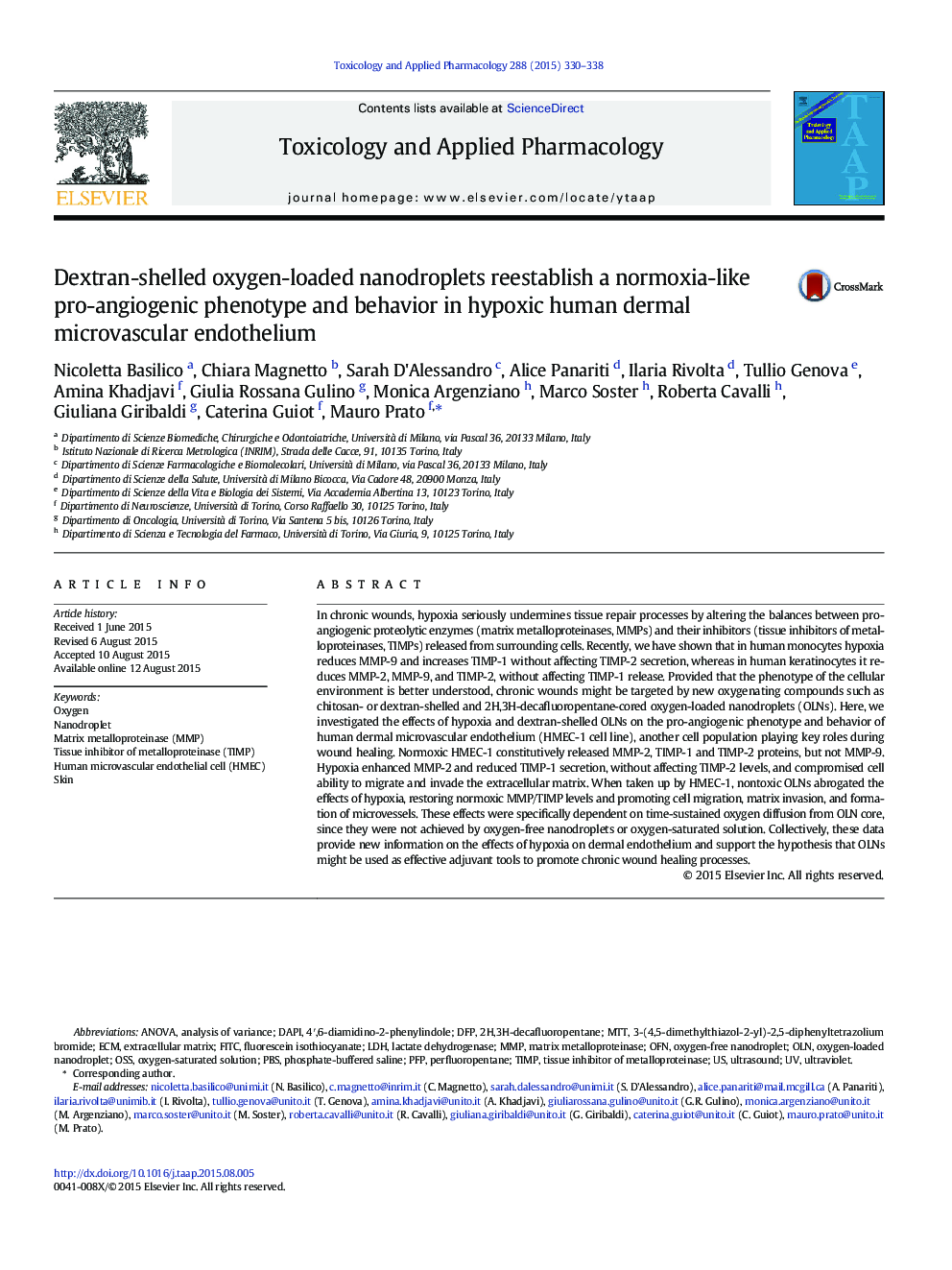| کد مقاله | کد نشریه | سال انتشار | مقاله انگلیسی | نسخه تمام متن |
|---|---|---|---|---|
| 2568317 | 1128433 | 2015 | 9 صفحه PDF | دانلود رایگان |
• Hypoxia enhances MMP-2 and reduces TIMP-1 secretion by dermal HMEC-1 cell line.
• Hypoxia compromises migration and matrix invasion abilities of HMEC-1.
• Nontoxic dextran-shelled oxygen-loaded nanodroplets (OLNs) are uptaken by HMEC-1.
• Dextran-shelled OLNs abrogate hypoxia effects on HMEC-1 pro-angiogenic phenotype.
• Dextran-shelled OLNs abrogate hypoxia effects on HMEC-1 pro-angiogenic behavior.
In chronic wounds, hypoxia seriously undermines tissue repair processes by altering the balances between pro-angiogenic proteolytic enzymes (matrix metalloproteinases, MMPs) and their inhibitors (tissue inhibitors of metalloproteinases, TIMPs) released from surrounding cells. Recently, we have shown that in human monocytes hypoxia reduces MMP-9 and increases TIMP-1 without affecting TIMP-2 secretion, whereas in human keratinocytes it reduces MMP-2, MMP-9, and TIMP-2, without affecting TIMP-1 release. Provided that the phenotype of the cellular environment is better understood, chronic wounds might be targeted by new oxygenating compounds such as chitosan- or dextran-shelled and 2H,3H-decafluoropentane-cored oxygen-loaded nanodroplets (OLNs). Here, we investigated the effects of hypoxia and dextran-shelled OLNs on the pro-angiogenic phenotype and behavior of human dermal microvascular endothelium (HMEC-1 cell line), another cell population playing key roles during wound healing. Normoxic HMEC-1 constitutively released MMP-2, TIMP-1 and TIMP-2 proteins, but not MMP-9. Hypoxia enhanced MMP-2 and reduced TIMP-1 secretion, without affecting TIMP-2 levels, and compromised cell ability to migrate and invade the extracellular matrix. When taken up by HMEC-1, nontoxic OLNs abrogated the effects of hypoxia, restoring normoxic MMP/TIMP levels and promoting cell migration, matrix invasion, and formation of microvessels. These effects were specifically dependent on time-sustained oxygen diffusion from OLN core, since they were not achieved by oxygen-free nanodroplets or oxygen-saturated solution. Collectively, these data provide new information on the effects of hypoxia on dermal endothelium and support the hypothesis that OLNs might be used as effective adjuvant tools to promote chronic wound healing processes.
Journal: Toxicology and Applied Pharmacology - Volume 288, Issue 3, 1 November 2015, Pages 330–338
